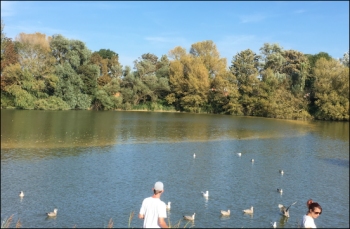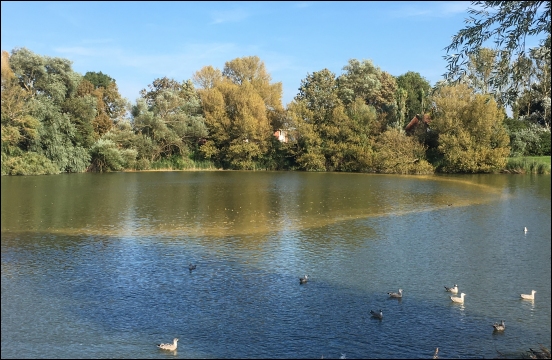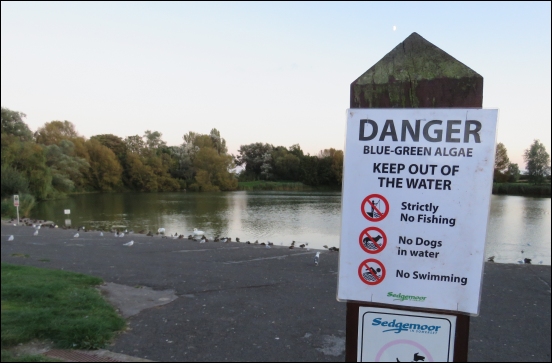New tests of the water in the lakes at Apex Park in Highbridge have found potentially toxic blue-green algae renains a danger.
Claire Faun, from Sedgemoor District Council, told Burnham-On-Sea.com on Friday: “The Environment Agency have tested the second sample from Apex Park Lake, which was collected the afternoon of 6th September.”
 “The water colour of the lake is still appearing green though there doesn’t appear to be scum visible at this time or any dead fish.”
“The water colour of the lake is still appearing green though there doesn’t appear to be scum visible at this time or any dead fish.”
“However, there are still high levels and weekly sampling will continue.”
She added that warning signs will remain in place.
Sedgemoor District Council has urged park users to stay away from the water.
Sedgemoor District Council’s Teresa Harvey said: “Our advice continues to be that dogs should not be allowed to drink, swim or paddle in the water. Also, fishing is not permitted, fish caught from the water should not be eaten, swimming is not allowed, all contact with the water should be avoided, and notices surrounding the water should be observed and abided.”
“Anyone who has come into contact with the water containing blue-green algae should wash with fresh water immediately.”
“Anyone who has come into contact with the affected water and has become ill should obtain urgent medical attention.”
As first reported here by Burnham-On-Sea.com, the algae has been growing across the water surface of the lake next to the main car park, helped by the recent hot weather.

Blue-green algae is toxic to animals and people, added council spokeswoman Claire Faun. She told Burnham-On-Sea.com: “Algae occur naturally in inland waters such as rivers, streams and lakes. When conditions are ideal for growth (i.e. a period of hot weather) an algal bloom can occur. During a bloom, the water becomes less clear and may look green, blue-green or greenish-brown. Scums can form during calm weather when several bloom forming species rise to the surface. This can look like paint, mousse or small clumps.”
“Cyanobacteria or ‘blue-green algae’, a type of blooming algae, can produce toxins. These toxins can kill wild animals, livestock and pets. They can also harm people, producing rashes after skin contact and illnesses if swallowed. Algal blooms block sunlight from reaching other plants in the water. They also use up oxygen in the water at night which can suffocate fish and other creatures. Oxygen is also used up when the bloom decays.”
“The blooms usually occur in the summer but there are no quick or easy remedies for the control of blue-green algae once they appear in a lake or pond. Not all blue-green algae blooms and scums are toxic but it is not possible to tell from appearance and so it’s best to assume they are harmful and take several precautions.”
Pictured: The algae outbreak at Apex Park in Highbridge







